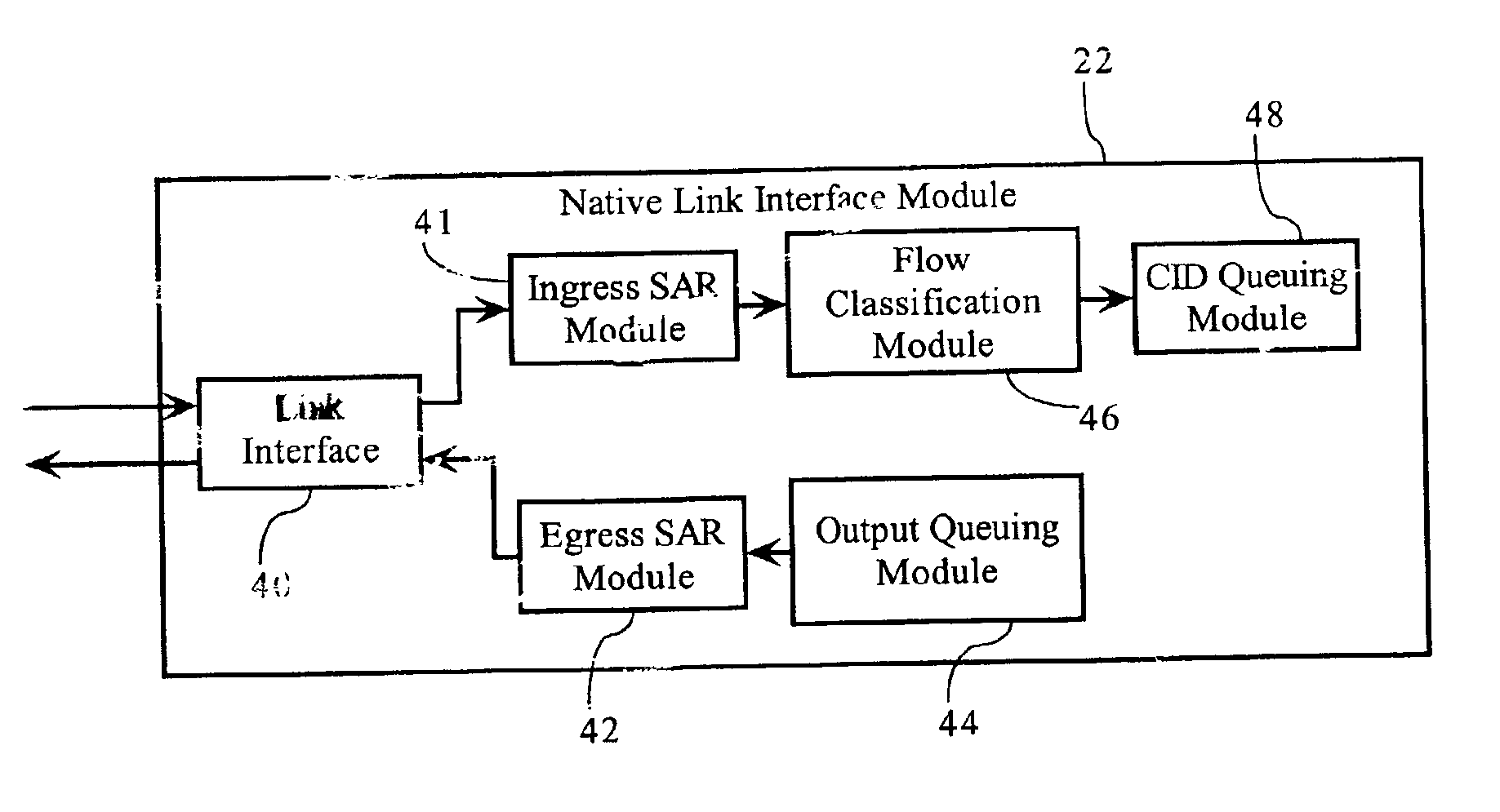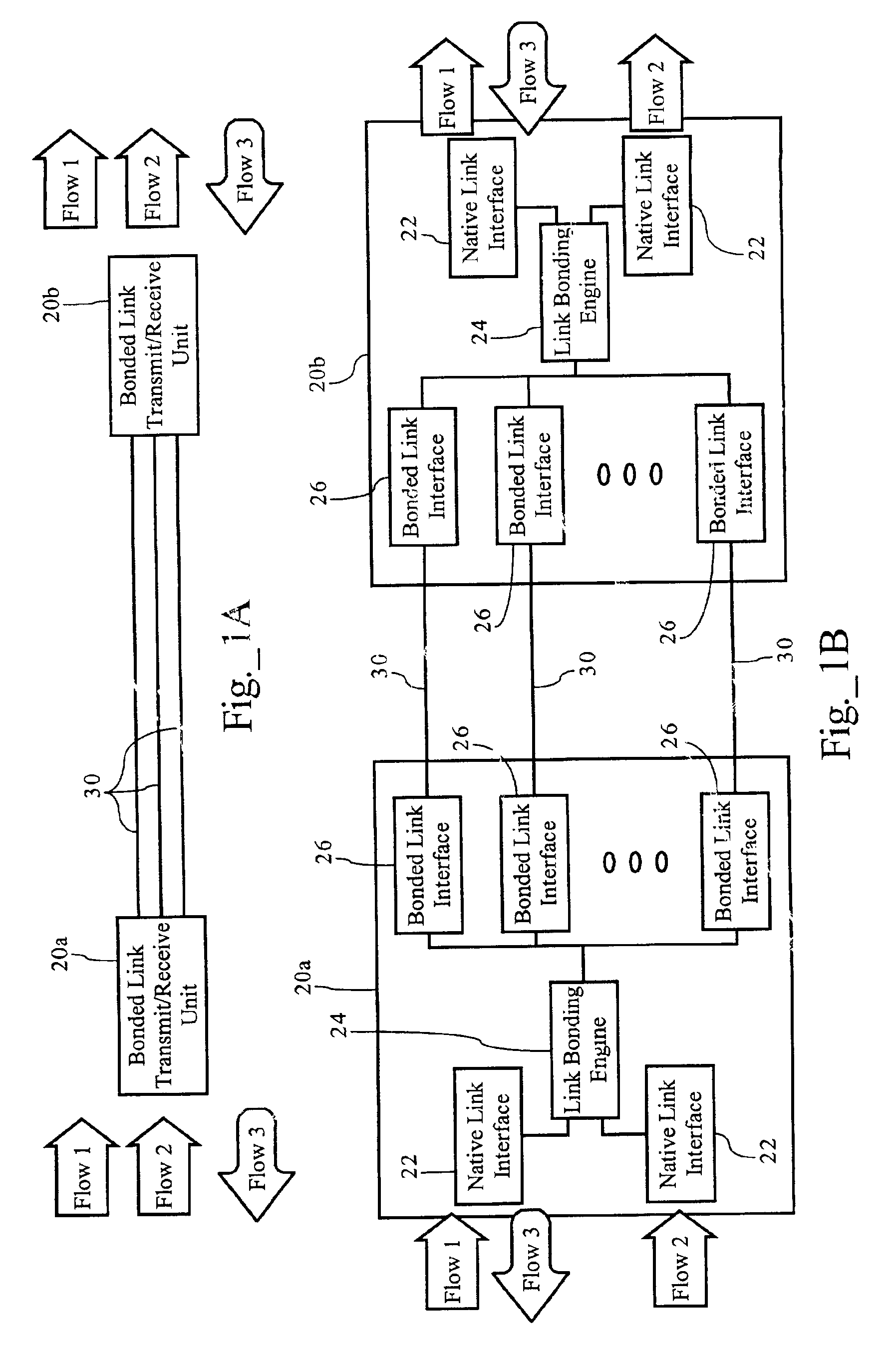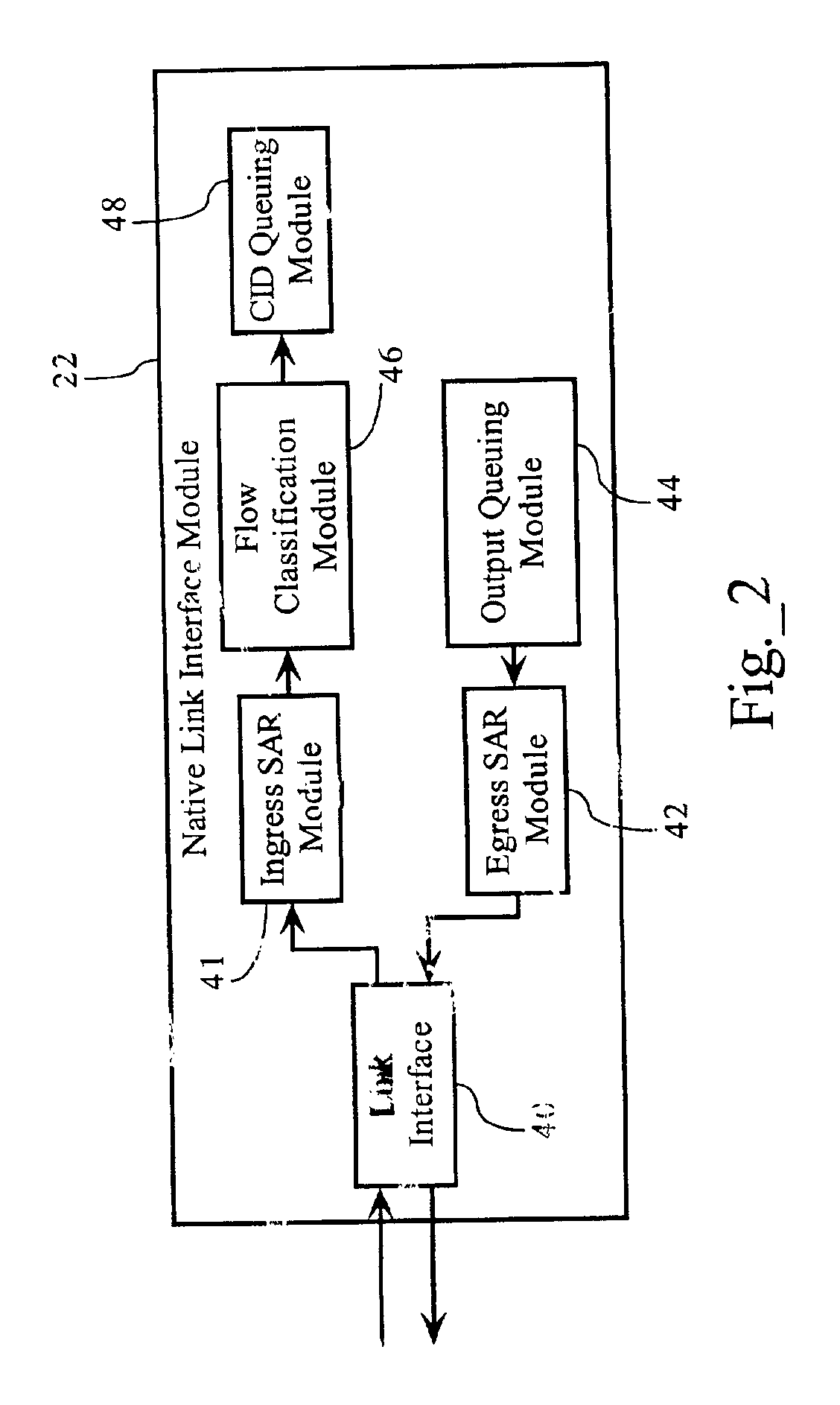Methods, apparatuses and systems facilitating aggregation of physical links into logical link
a technology of physical link and logical link, applied in the field of telecommunications systems, can solve the problems of limiting the allowable difference in link speed between bonded links, requiring the use of expensive optical fiber and optical network equipment, and unattractive ds3 links for many enterprise customers, so as to improve the efficiency of data transfer, reduce the delay, and improve the effect of reliability
- Summary
- Abstract
- Description
- Claims
- Application Information
AI Technical Summary
Benefits of technology
Problems solved by technology
Method used
Image
Examples
Embodiment Construction
A. Functional Overview
FIG. 1A illustrates operation of the link aggregation functionality according to one embodiment of the present invention. As FIG. 1 illustrates, a plurality of physical links 30 operably connect a first bonded link transmit / receive unit 20a to a second bonded link transmit / receive unit 20b. As discussed more fully below, bonded link transmit / receive unit 20a, in the transmit direction (e.g., flows 1 and 2), processes native flows and transmits them across one or more bonded links 30 to a second bonded link transmit / receive unit 20b, which reassembles the native flows for further transmission. As FIG. 1A illustrates, bonded link transmit / receive units 20a and 20b also operate in the reverse direction. In addition, as FIG. 1A illustrates, the link aggregation system transports native flows transparently across bonded links 30. In one embodiment, physical link 30 is an xDSL link, such as a VDSL link. Of course, one skilled in the art will r...
PUM
 Login to View More
Login to View More Abstract
Description
Claims
Application Information
 Login to View More
Login to View More - R&D
- Intellectual Property
- Life Sciences
- Materials
- Tech Scout
- Unparalleled Data Quality
- Higher Quality Content
- 60% Fewer Hallucinations
Browse by: Latest US Patents, China's latest patents, Technical Efficacy Thesaurus, Application Domain, Technology Topic, Popular Technical Reports.
© 2025 PatSnap. All rights reserved.Legal|Privacy policy|Modern Slavery Act Transparency Statement|Sitemap|About US| Contact US: help@patsnap.com



